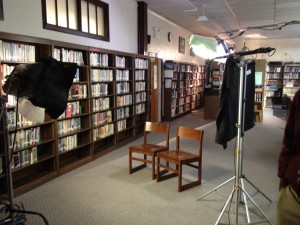Creating the Environment for Learning (Framework for Instructional Planning fig. A.1 p. XVI)
Setting the Objectives The purpose of this blog post is to share my experience with Ceri Dean, lead author of Classroom Instruction That Works, (CITWs) second edition. She visited my school in May of 2012 as part of the ASCD and McREL film series on the new CITWS which will be launched later this summer. Ceri has been with the Mid- continent Research for Education and Learning (McREL) for 20 years. She is currently the Vice President of Field Services. In addition to holding a variety of positions with McREL, her career in education has included being a high school math teacher and an editor. She earned her Ph.D. in Curriculum and Instruction from the University of Connecticut at Storrs.
My desired outcome of this post is for the reader to understand more about Ceri and to apply the tenets of the new CITWs through our shared conversations and observations during her visit to our school. My overarching goal, through my learning and application, will be to provide the rationale for your learning.
Providing Feedback
Ceri is such a cool individual. As I observed her during the filming at my school, I was amazed with her ability to help us with our pre-filming jitters. “She was a calming force for us,” remarked Jaime Sutton.
Providing Recognition
Ceri was very busy during the first day of filming. This was her opportunity to show the world what Millville has been learning and to celebrate the stories of the students and teachers who were participating. She made sure to watch both filming sessions, talk with the teachers and the students.
Reinforcing Effort
After Ryan Hudson’s filming session, he walked right by me to get to Ceri. He later said, “No disrespect Spike, but I wanted to hear what Ceri thought!” Ceri took time to talk with Ryan about his lesson. She listened to him as he explained what he was attempting and what he felt he accomplished. Ceri gave him specific feedback that reinforced his objective!
Helping Students Develop Understanding (Framework for Instructional Planning fig. A.1 p. XVI)
Cues and Questions
I asked Ceri to discuss the important aspects of the new book. Here are some of the concepts I wrote down as we talked:
Emphasis of the new book:
- Clarify the concept around strategies
- Cooperative learning
- Positive interdependence
- Not always focused on social skills
- Keagan strategies
- Is this cooperative learning?
What is McREL?
- McREL is a learning organization
- Our mission statement is really important to us. “Making a difference in the quality of education and learning for all through excellence in applied research, product development, and service.”
- We are focused on changing the odds
How can schools improve?
- If schools are focused on the use of strategies with intentionality and quality and fidelity
- Using CITW makes you think more deeply about instruction
- Framework is there for continued improvement (Success In Sight)
- School leaders and teachers need to ask and answer questions together
- Question your data
- Teachers should be seen as action researchers and learners
- Everyone must work collaboratively (students, teachers, parents, administration, community)
- One person can’t do it all
- Own your projects!
Non-linguistic representation
I showed Ceri my blog to provide her with the context in which I would be writing. We talked about how the image of the school can impact on the learning environment.
Summarizing and Note Taking
As Ceri talked, I was feverishly taking notes. Here was someone with a wealth of knowledge that I wanted to learn from. I asked her about something I have been pondering for some time: the evolution of school administration. As a new principal I see how much the job has changed. She was involved with the National Awards Program for model Professional Development in late 1990s. In order to win this award, schools were required to go through a detailed evaluation process. There were site visits, and teams of evaluators determine how Professional Development really made a difference in the school. What the process revealed was the importance of Principals in action. The administrators were breaking the mold of what was expected at the time. They were the first who were transitioning away from management towards leadership. They were also the ones who developed the patterns in which most administrators are required to accomplish.
Assigning Homework and Providing Practice
Where is the research in schools? Ceri talked about the 10 regional educational labs throughout the country that are sponsored by the Department of Education and provide research opportunities to school districts. They conduct randomized controlled research studies. These labs have produced a substantial amount of research that has assisted the educational community. Recruitment can be difficult because who wants to be in the control group? Not to mention that there are a lot competing priorities in schools and districts such as parent support, time, State Assessments, and resources.
McREL, creating a place where every person needs to be a learner. Ceri spoke very highly of the tool that McREL uses to understand and build their own learning community through using Gallup’s strengthsfinder® survey. Each member takes the survey and there are 34 strengths. Everyone displays a card with their top 5 strengths on their desks. It assists the teams as they work together. Strengthsfinder® helps individuals and teams maximize strengths. Often times, they ask each other, “What is working well? How can we build on what we are already doing?”
Now discover your strengths. Purchase the book and the code will be at the back of the book. http://www.strengthsfinder.com/home.aspx?gclid=CNSF9J-qnrACFak7OgodjBQkWA)
Helping Students Extend And Apply Knowledge (Framework for Instructional Planning fig. A.1 p. XVI)
Identifying Similarities and Differences
I am sure I am not alone in wondering how McREL was going to fill the void left by Robert Marzano. Often referred to as “Marzano’s strategies” or simply “Marzano” the first edition of Classroom Instruction That Works (2001) became an effective tool for educators to improve instruction.
Our discussion compared the 2nd addition with the 2001 edition.
2001 Edition
- Lead authors Marzano, Pickering, and Pollack
- Best-selling Book
- Meta-Analysis up to 1998
- Book was grouped based on 9 strategies
Same
- Can be used with Power-walkthroughs
- 9 strategies
- Focus on best practices
- Framework for success
2012
- Lead authors Dean, Hubbell, Pitler, and Stone
- Update on the research since 1998
- Chose the conservative results
- Strategies are grouped within the framework for instructional planning (3 parts)
- Sought to understand what the updated research looked like
- Used narrative reviews, qualitative, and theoretical literature
- Some strategies hadn’t been researched at all since 1998, so they kept the original data
- The small number of studies for some strategies are a result of more restrictive definitions
- Technical report on CITWs was not included in the book for easier reading, but can be found on web(http://www.mcrel.org/PDF/Instruction/0121RR_CITW_report.pdf#search=%22technical%20report%20on%20CITW%22)
Generating and Testing Hypothesizes
McREL’s theory is that the school improvement is within everyone’s reach. They have developed a Success in Sight program to help schools turnaround. Through the Success in Sight, McREL assists schools in understanding the change process. Are they dealing with 1st order or second order change? The solution is simple. Schools need to use research based strategies. They must (1) use data to set and monitor goals, (2) use research-based practices to make improvements and increase student achievement, (3) foster and engage in shared leadership for improvement, (4) create and maintain a purposeful community, and (5) apply a comprehensive and systematic continuous improvement process. Understanding how to manage the change process is part of what teams learn through the Success in Sight process.
Conclusion
Spending time with such an incredible educator as Ceri Dean was one of the highlights of this school year. Ceri, as stated prior, is a really cool person. She is funny, intelligent, and insightful. It is clear from my time with her that McREL and the Classroom Instruction That Works series is in good hands.
Resources:
Classroom Instruction That Works (2nd Edition)











